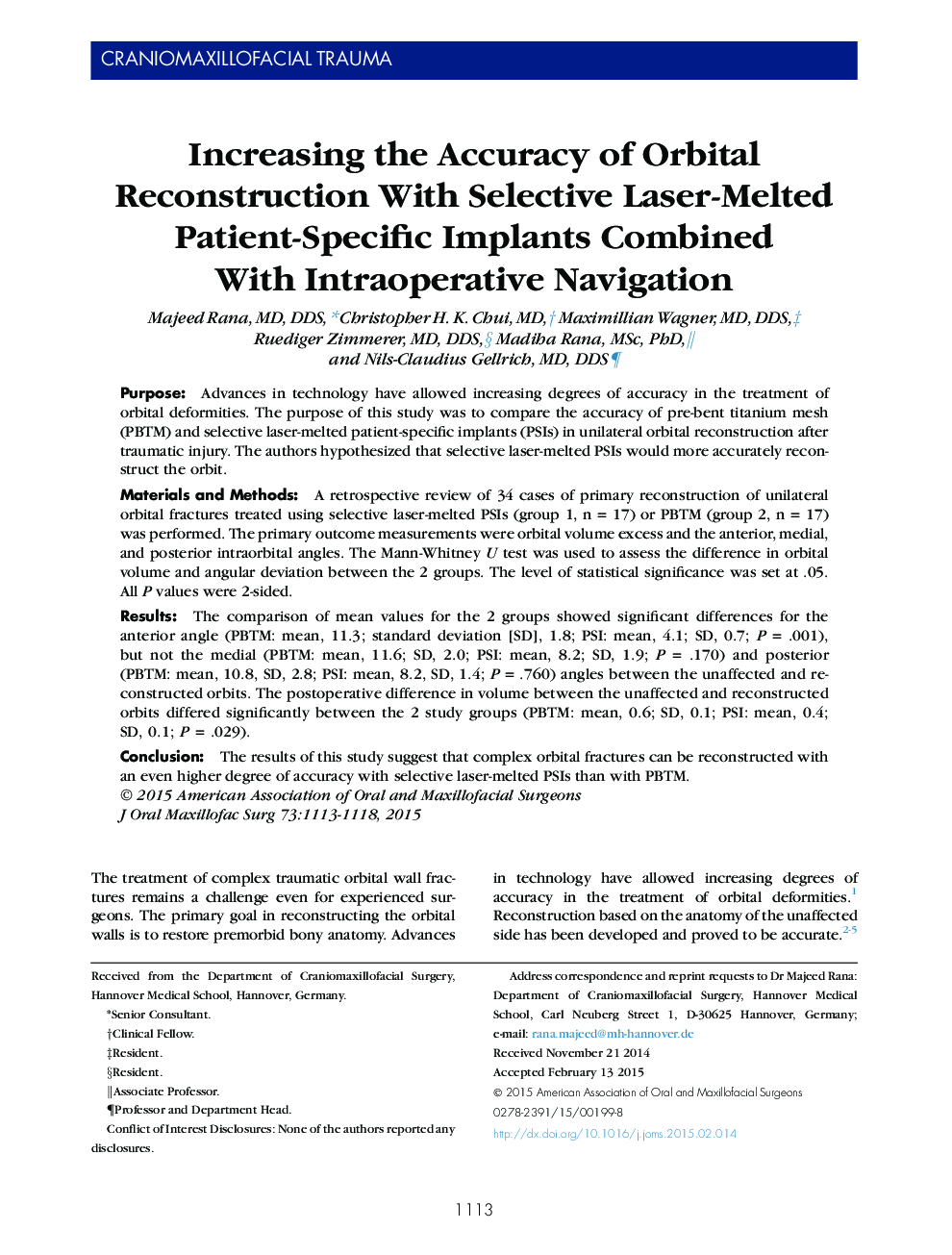| Article ID | Journal | Published Year | Pages | File Type |
|---|---|---|---|---|
| 3155838 | Journal of Oral and Maxillofacial Surgery | 2015 | 6 Pages |
PurposeAdvances in technology have allowed increasing degrees of accuracy in the treatment of orbital deformities. The purpose of this study was to compare the accuracy of pre-bent titanium mesh (PBTM) and selective laser-melted patient-specific implants (PSIs) in unilateral orbital reconstruction after traumatic injury. The authors hypothesized that selective laser-melted PSIs would more accurately reconstruct the orbit.Materials and MethodsA retrospective review of 34 cases of primary reconstruction of unilateral orbital fractures treated using selective laser-melted PSIs (group 1, n = 17) or PBTM (group 2, n = 17) was performed. The primary outcome measurements were orbital volume excess and the anterior, medial, and posterior intraorbital angles. The Mann-Whitney U test was used to assess the difference in orbital volume and angular deviation between the 2 groups. The level of statistical significance was set at .05. All P values were 2-sided.ResultsThe comparison of mean values for the 2 groups showed significant differences for the anterior angle (PBTM: mean, 11.3; standard deviation [SD], 1.8; PSI: mean, 4.1; SD, 0.7; P = .001), but not the medial (PBTM: mean, 11.6; SD, 2.0; PSI: mean, 8.2; SD, 1.9; P = .170) and posterior (PBTM: mean, 10.8, SD, 2.8; PSI: mean, 8.2, SD, 1.4; P = .760) angles between the unaffected and reconstructed orbits. The postoperative difference in volume between the unaffected and reconstructed orbits differed significantly between the 2 study groups (PBTM: mean, 0.6; SD, 0.1; PSI: mean, 0.4; SD, 0.1; P = .029).ConclusionThe results of this study suggest that complex orbital fractures can be reconstructed with an even higher degree of accuracy with selective laser-melted PSIs than with PBTM.
